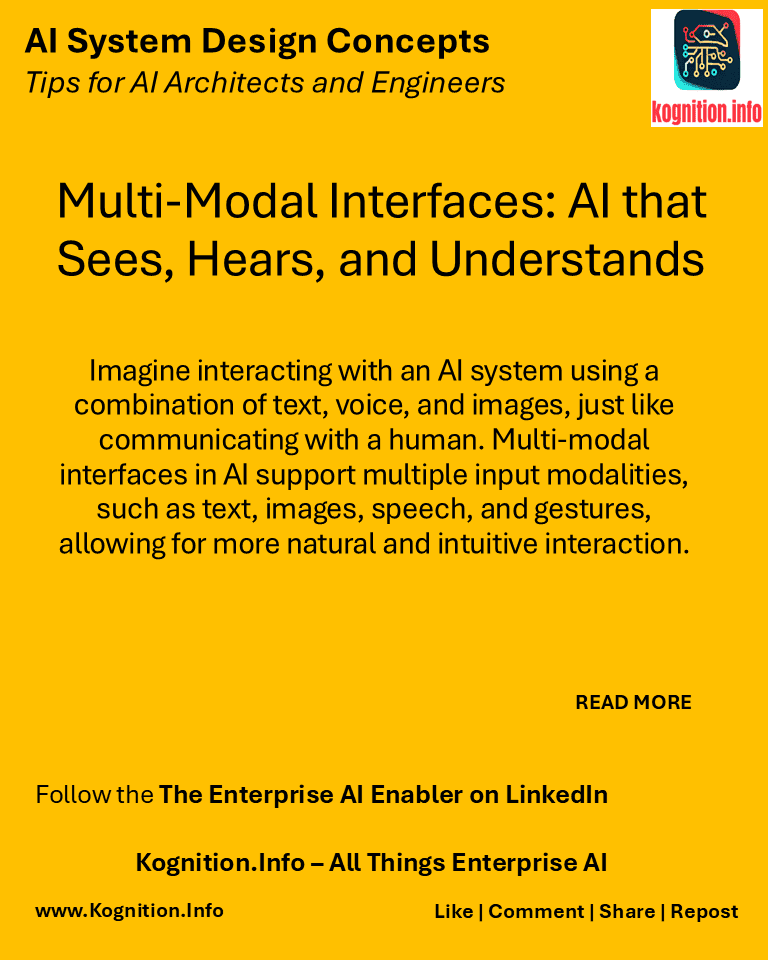
Imagine interacting with an AI system using a combination of text, voice, and images, just like communicating with a human. Multi-modal interfaces in AI support multiple input modalities, such as text, images, speech, and gestures, allowing for more natural and intuitive interaction.
Use cases:
- Virtual assistants: Enabling users to interact with virtual assistants using voice commands, text input, or images.
- Accessibility tools: Providing alternative input methods for users with disabilities, such as voice recognition for those with limited mobility.
- Enhanced user experience: Creating more engaging and immersive experiences by combining different input modalities.
How?
- Integrate different input modalities: Combine technologies like natural language processing, computer vision, and speech recognition to handle different input types.
- Develop a unified interface: Design an interface that seamlessly integrates different input modalities.
- Train models on multi-modal data: Train AI models on datasets that include multiple modalities to understand and respond to different input combinations.
- Contextual understanding: Develop AI systems that can understand the context and relationships between different input modalities.
Benefits:
- Natural interaction: Allows for more natural and intuitive interaction with AI systems.
- Improved accessibility: Makes AI more accessible to a wider range of users, including those with disabilities.
- Enhanced user experience: Creates more engaging and immersive experiences.
Potential pitfalls:
- Complexity: Developing multi-modal interfaces can be complex and require expertise in different AI domains.
- Data requirements: Training models on multi-modal data can be challenging due to the need for large and diverse datasets.
- Integration challenges: Integrating different input modalities seamlessly can be technically demanding.
